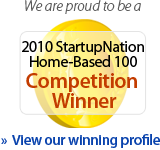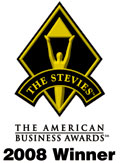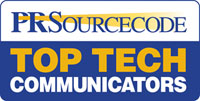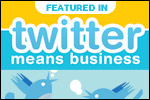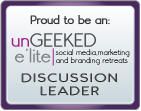Old School Media Relations: The way of the past or a lesson for the future?
Posted on July 6, 2010 by Crystal Macaulay
Filed Under Media, Public Relations | 15 Comments

With college graduates flooding a still challenging job market, I couldn’t help but reminisce about my early days as a fresh-faced, energetic PR coordinator for a large national agency based in Boston. Those were the days! It’s both astonishing and amusing to realize how much PR tactics have changed since then. I remember spending countless, neck-kinking hours reading the broadsheets and weekly hard copies and manually cutting and pasting print coverage into neatly organized clip books for my clients.
And who else remembers printing and collating those expensive, full-color press kits with a meticulously edited pitch letter on the client’s letterhead then sending it in the last drop-off of the night by FedEx for the media VIPs on your target list? In some ways, the art of media relations was more about a compelling mailing presentation and who-you-know than it is today. The best PR executives prided themselves on their relationships with key media contacts and bolstered those relationships with coffee or lunch meetings or exclusive invitations to industry or client events.
Pitching processes have changed a lot over the years as well. As recently as a few years ago, I worked for a hospitality PR agency where we literally taped photo slides to calendar listings, and mailed them by the hundreds. Today, we’d be hard pressed to generate the sheer number of calendar listings and news briefs accompanied by photos that regularly appeared as a result of this mass mailing. Yet, in technology PR, we’d never dream of such broad net pitching.
Sure, we’re still looking to generate hits, and we do, but we go about it a little differently and a lot more carefully. With the likes of the Bad Pitch blog sharing the latest ill conceived, poorly written, audacious pitches, you’d just be plain foolish to spam your media contacts or send file attachments without permission. Those of us who’ve been in the business for a while understand that good media relations requires a lot of research and very targeted, personal pitches. This method absolutely takes more time and effort and requires a more narrow focus on fewer media targets, but the results are well worth it.
Thinking about the old school method of media relations, one has to wonder if our industry has lost some valuable strategies along the way to the digital age. As these outdated pitching methods have given way to the online press kit, email communications, and 140-character pitches via Twitter, have we forgotten the basics of good media relations?
Personally, I think there’s something to be gained by recalling the archaic methods of PR’s past to remind us of the foundation of our livelihood. Here are a few of my favorite tips from Rafe Needleman’s Pro PR Tips Blog that reiterate that the Old School lessons learned are still pertinent today:
- Stay on target: Study your target. How hard is it to read his/her stuff before you pitch? (#10)
- Don’t Nag: 90% of the phonecalls I get are people asking if I got the press release they emailed. Yes, I got it. Did I read it? Maybe. Do I care? You’d know already. Oh, wait. Here’s something new and even more annoying: A phone call from a PR person telling me she will be emailing me a press release later. Argh! Just send it! (#82)
- Anything you say… Remember…Anything you say…can be used against you. Or for you. Assume that your phone call, email, IM, or Twitter message is on the record. We sure do. Want to be off the record or anonymous? Agree to it beforehand. (#110)
- Three Degrees of Lame Lesson: If you’re going to ship a presentation in a clever package, the message should fit the medium. (#118)
- Circle Jerks: Don’t blast a ton of people with the same crap. Pick and choose your media targets, and write personal notes to them. (#127)
- The Only Rule: Ryan Block said it best: “Pro PR Tips can always be summed up as: Do your homework and be courteous.” (#100)
I’m not suggesting we regress to faxing press releases, or spend our clients’ money wining and dining editors, but by keeping in mind the hands-on approach and results of those old school methods, we find the key to better and lasting media relations today.
Do you still rely on the core foundation of traditional PR tactics you learned in your first jobs or have you morphed these tactics into something new and better today? Do you consider yourself a traditionalist with digital communications skills or do you consider yourself a digital communications professional with a background in PR?
Share your perspectives on “old school” vs. new media techniques for capturing the attention of important media targets. How has our profession’s media tactics evolved and where will it go next?
Extra Bonus Question: What’s the name of the “Old School” character pictured above.
Tags: Bad Pitch blog, clip books, media relations, Old School, PR tactics, Pro PR Tips, Rafe NeedlemanComments
-
http://www.linkedin.com/in/tressalynne tressalynne
-
DJDiG
-
http://blog.ecairn.com Laurent Pfertzel
-
http://www.wellonscommunications.com Wellons Communications
-
Cameronebarry
-
http://www.3hatscommunications.com davinabrewer
-
http://twitter.com/p7sky Paul Sevensky
-
http://www.paigeworthy.com paigeworthy
-
http://www.paigeworthy.com paigeworthy
-
Chris Nahil
-
Crystal Macaulay
-
Crystal Macaulay
-
Crystal
-
http://www.conversity.be/blog/8-classic-pr-tactics-that-work-well-in-social-media-too/ 8 classic PR tactics that work well in social media, too « Conversity.be
-
http://www.amarketingexpert.com/fatal-pr-mistakes-authors-make-on-their-campaigns/ Fatal PR - Mistakes Authors Make on Their Campaigns | Author Marketing Experts, Inc.






